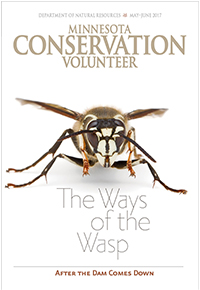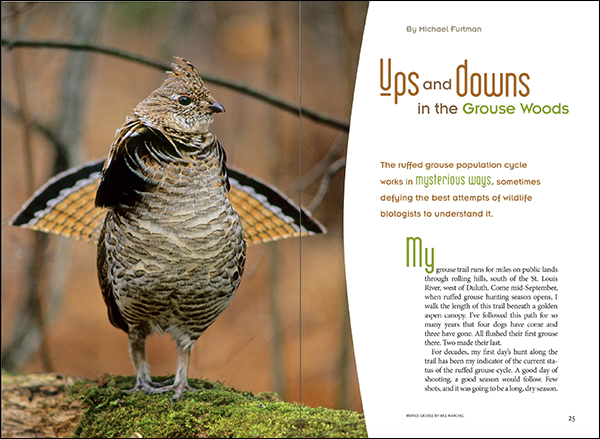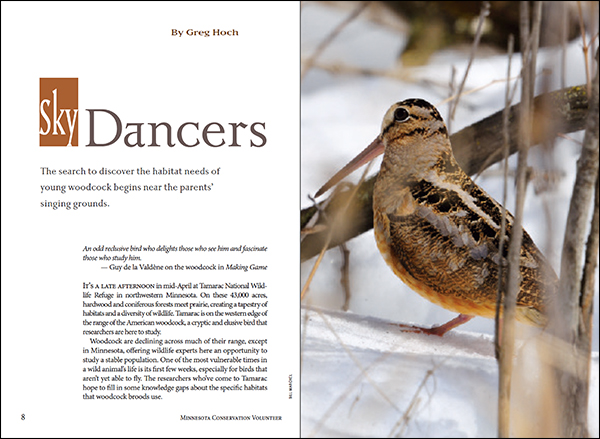Ruffed Grouse and Woodcock in Minnesota
While all animal populations fluctuate, only those that rise and fall in large amounts and with regularity are considered cyclical. Grouse numbers rise and fall in a 10-year cycle that remains somewhat of a mystery. Wildlife managers simply call it the "grouse cycle." Evidence suggests there is a cycle to the cycle: a pattern that shows every other peak is higher than the intervening one. And there are differences in the cycle depending upon location. In Minnesota the cycle is most noticeable in the prime grouse range in the northeast. The cycle is more subtle in the northwestern tallgrass aspen parklands, the central hardwoods region, and the southeastern blufflands.
The American woodcock (Scolopax minor) is technically a shorebird—a family of birds most often seen on beaches, wetlands, grasslands, or tundra. However, the woodcock lives in the forest. Specifically, it prefers young hardwood forests, small forest openings, and brushy uplands. Many habitats that look scrubby and are hard for people to walk through will suit the woodcock.
 Want Minnesota's best guide to wild things and places? Check out Minnesota Conservation Volunteer. This bimonthly magazine delivers in-depth, in-the-field coverage of outdoor news, hot topics, and fun outdoors. Its reader-supported mission encourages conservation, enjoyment, and sustainable use of Minnesota's natural resources. Subscribe and contribute today.
Want Minnesota's best guide to wild things and places? Check out Minnesota Conservation Volunteer. This bimonthly magazine delivers in-depth, in-the-field coverage of outdoor news, hot topics, and fun outdoors. Its reader-supported mission encourages conservation, enjoyment, and sustainable use of Minnesota's natural resources. Subscribe and contribute today.
 Want Minnesota's best guide to wild things and places? Check out Minnesota Conservation Volunteer. This bimonthly magazine delivers in-depth, in-the-field coverage of outdoor news, hot topics, and fun outdoors. Its reader-supported mission encourages conservation, enjoyment, and sustainable use of Minnesota's natural resources. Subscribe and contribute today.
Want Minnesota's best guide to wild things and places? Check out Minnesota Conservation Volunteer. This bimonthly magazine delivers in-depth, in-the-field coverage of outdoor news, hot topics, and fun outdoors. Its reader-supported mission encourages conservation, enjoyment, and sustainable use of Minnesota's natural resources. Subscribe and contribute today.



